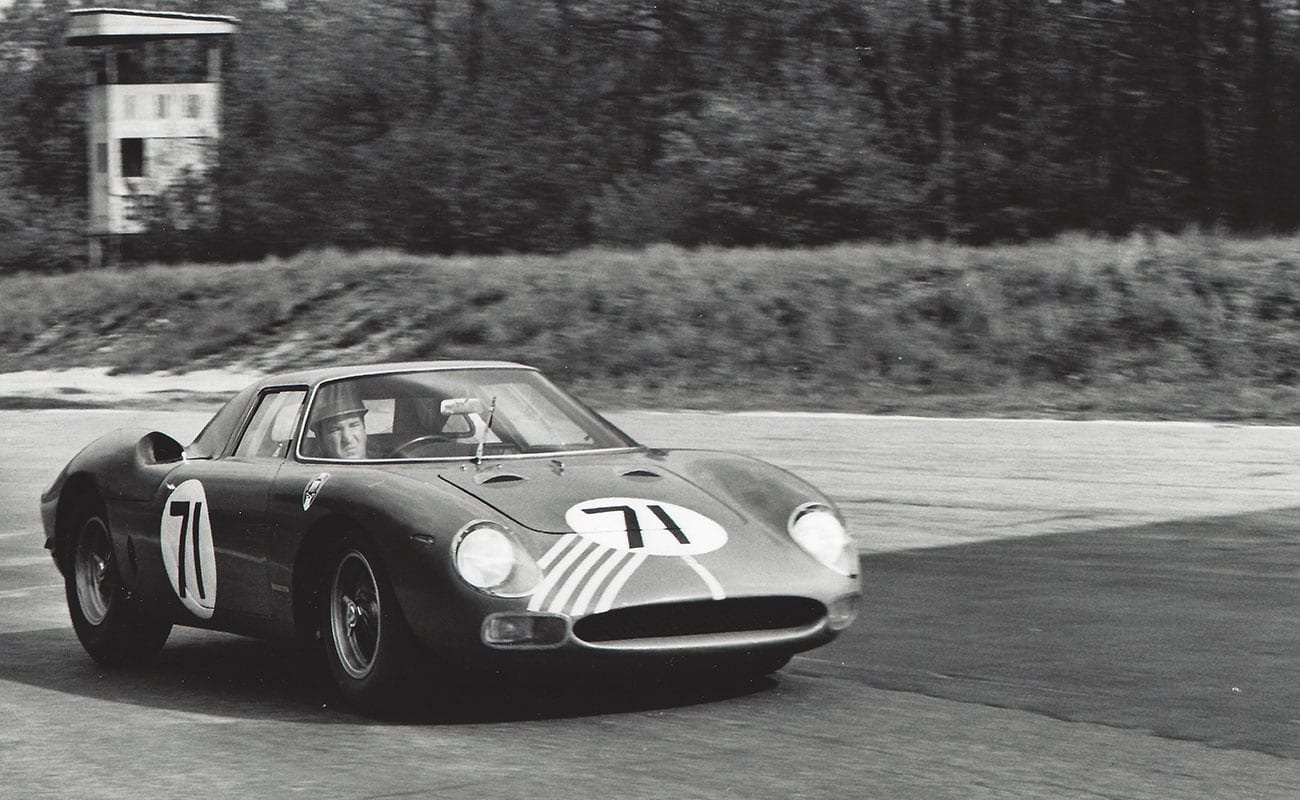Tech Specs
Twelve-cylinder 60-degree vee engine, single overhead camshaft 3286 cc, 320 hp at 7500 rpm.
Before/After
1965 Ferrari


About the 1965 Ferrari 250 LM Berlinetta GT
Enzo Ferrari tried once too often. Subterfuge, and perhaps a good dinner with vino concealing veritas, persuaded CSI officials to homologate the rule-bending front-engined 250 GTO in the Gran Turismo category for 1962, despite only 39 of the required 100 cars having been built . The subterfuge involved giving the 250 GTO odd serial numbers (Ferrari competition cars were serialed evenly), a ruse Enzo used again with the GTO’s successor rear-engine 250 LM for the 1965 season. This time, his submission months past the deadline and production massively below required minimum, he was summarily turned down. In addition to the CSI following the “fool me twice” doctrine, officials had been subjected to a vociferous protest by Carroll Shelby, who knew the build numbers of the GTO, as did the Ford Motor Company. Enzo Ferrari’s rage was beautiful to behold but he knew he had lost.
Placed in the prototype class that was the province of Ferrari’s faster 365 series of cars, Enzo declined to race the 250 LM in 1965. Independents took over. Divine salvation arrived at Le Mans from U.S. Ferrari distributor Luigi Chinetti’s North American Racing Team (NART). In expectation of the race being a pointless exercise in their uncompetitive LM, veteran Masten Gregory and hotshot newcomer Jochen Rindt decided to drive absolutely flat out until the car broke to amuse themselves. As faster prototypes, including the Ford GT-40 in its maiden effort, retired, the incredulous Gregory-Rindt pair worked up the leader board, ultimately passing another LM to take the checkered flag.
In 1966, GT class homologation build minimums were slashed to 50 by CSI officials. Both Ford’s GT-40 and Ferrari’s 250 LM were now Gran Turismo class competitors. Ford ultimately would produce twice that many GT-40s, Ferrari’s beautifully sculpted LM (Scaglietti built to Pininfarina design) wouldn’t come close. Ford dominated Le Mans for the next two years, of course, while the 250 LM performed admirably on several continents courtesy of the independents.
The display car was delivered in January 1965 to Canadian Michael McDonald, who used it as a spare for 250 LM No. 6047 and made minor modifications for street use. In 1970 the car was sold to the Gelles brothers of New York State and campaigned during that decade in Ferrari club events. As the century drew to a close, 6217 was in the ownership of David Lucas in New Zealand and STPO in Germany prior to joining the Collier Collection in 2005.
Photos – Peter Harholdt











